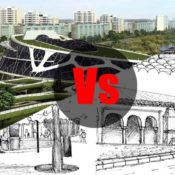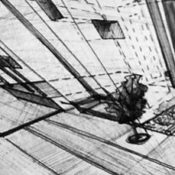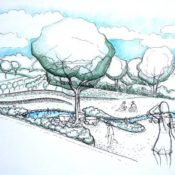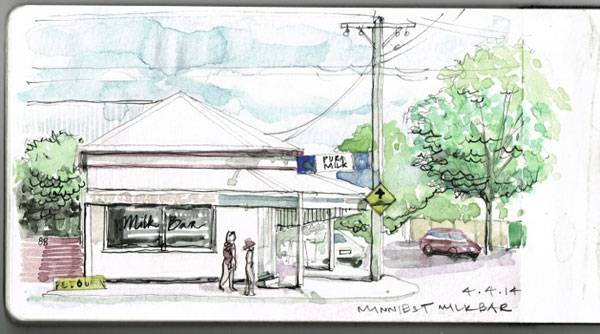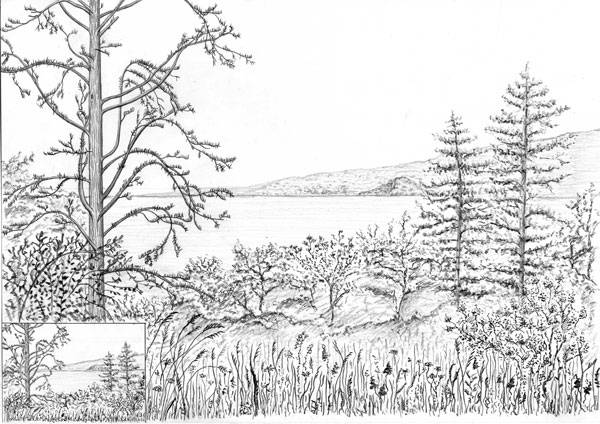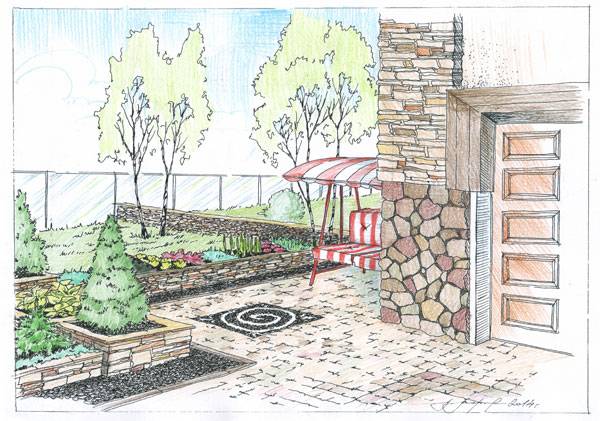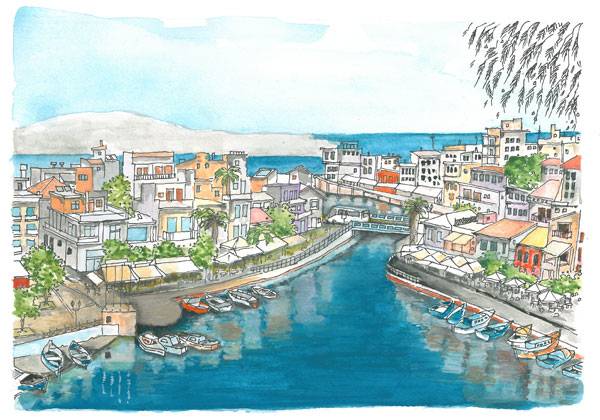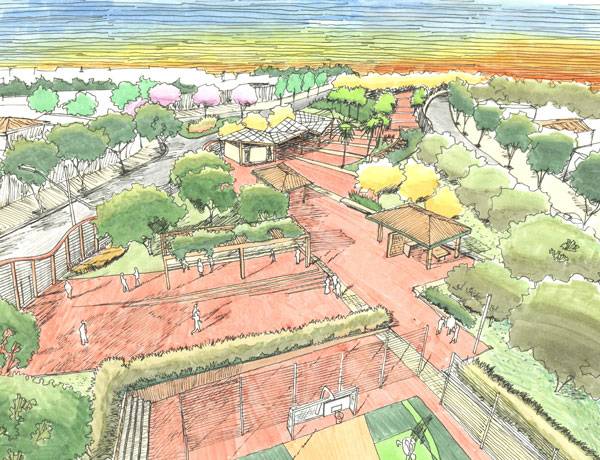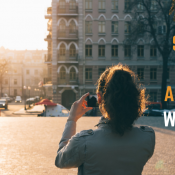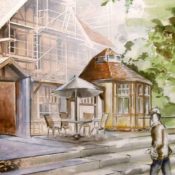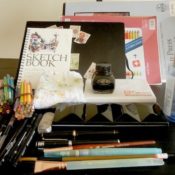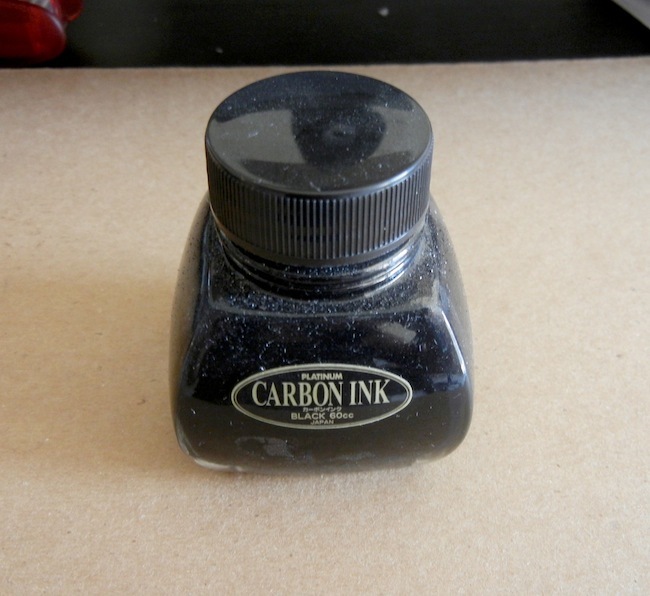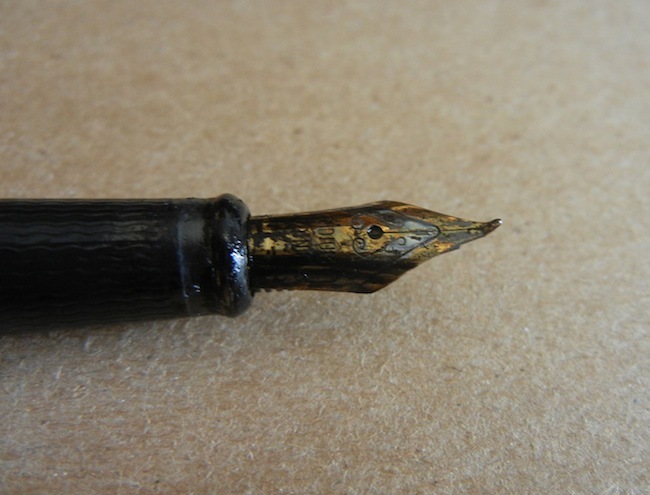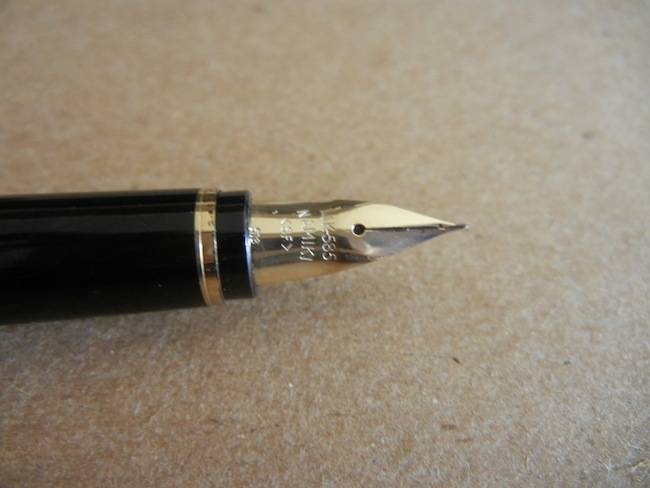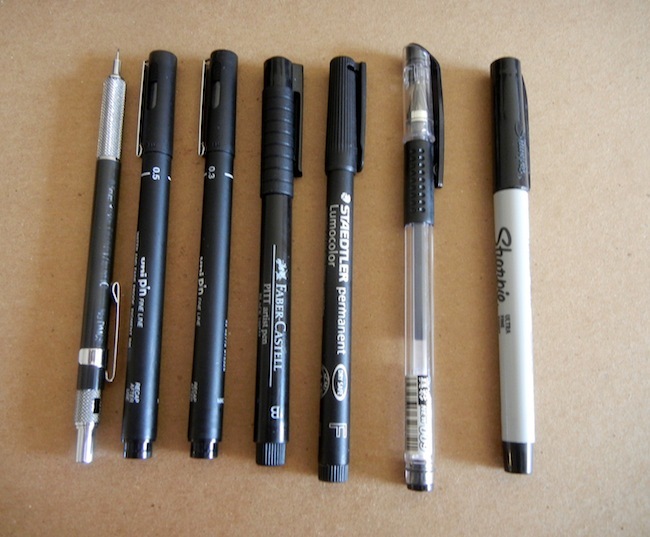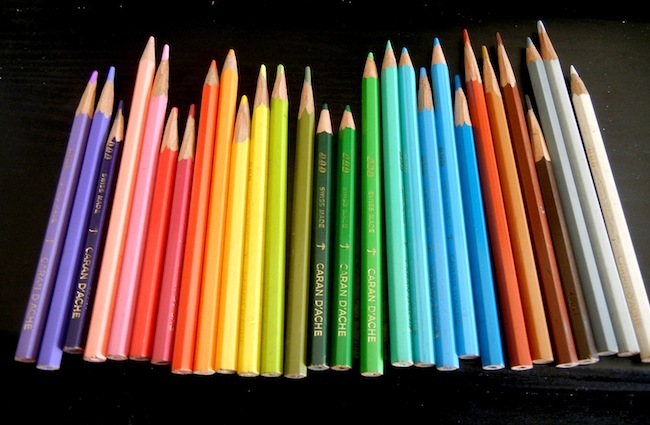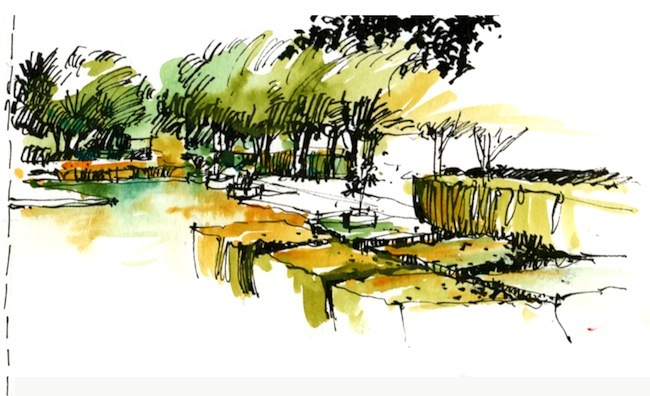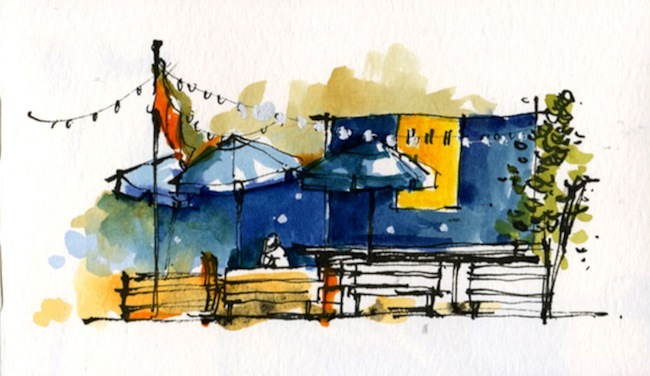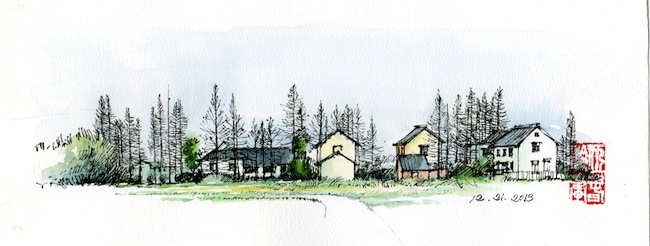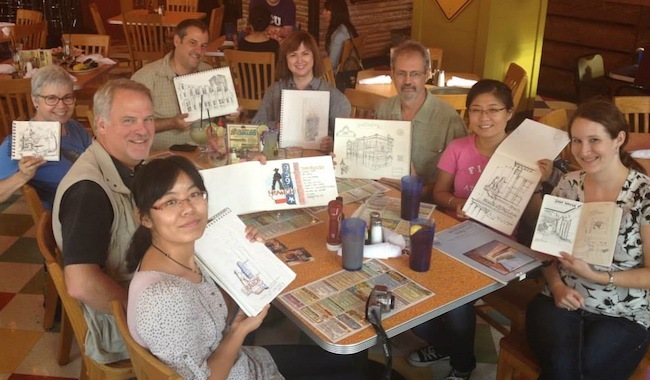28 search results for " James Richards "
If you didn't find what you were looking for try searching again.
Hand Drawing versus Computer Rendering. Which is Best for Landscape Architecture?
To be a successful landscape architect, one has to possess multiple qualities. The way to success is always pursued by three basic factors – the ideas we have, the persistence to realize them, and the way we present (or sell) them. Those three things go hand in hand. It’s not enough just to have good ideas. Almost every person has good ideas. But the difference between the good professional and the average one, is that the good landscape architect has the full package. He has ideas, knows how to present them, and is persistent. In this article, we will focus on the third part of the design process – how we illustrate our design concepts and why is the way we do it so crucial? If a designer generates original ideas but doesn’t display them in an attractive way, he will be wasting efforts, time, and money. If another designer doesn’t have marvelous ideas, just decent ones but is able to create a mind-blowing illustration of them, which one, you think, will gain more? After clarifying the significance of designers’ presentation skills, let’s discuss the two most popular graphic techniques for Landscape architects.
Hand Drawing versus Computer Rendering
Hand Drawing Although the majority of designers nowadays prefer computer rendering, hand drawing is still very much alive and kicking. It remains the most fluent and unhindered way to transmit what is in designer’s imagination to the physical world.
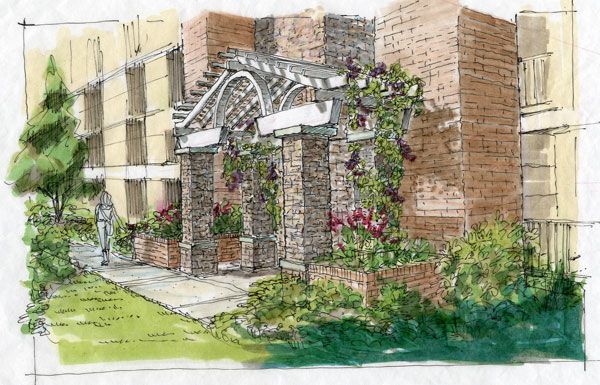
By Pete Bonette. From imagination to paper.
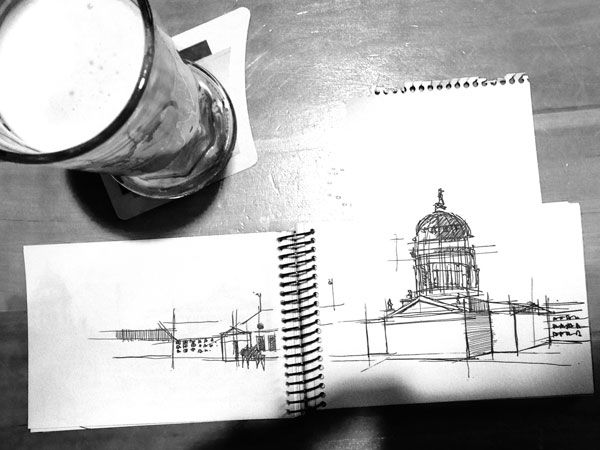
By Pablo Saiz del Rio. Featuring in our Sketchy Saturday Top 10
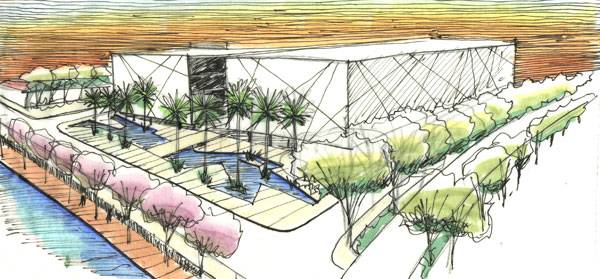
By Gustavo Garrido

Computer rendering. Photo credit: shutterstock.com
- Digital Drawing for Landscape Architecture, second edition | Book Review
- Top 10 YouTube Tutorials for Technical Drawing
- Freehand Drawing & Discovery by James Richards | Book Review
Cons: Like hand drawing, computer rendering has its shortcoming too. 1. Licensed versions require resources The greatest disadvantage of computer programs is that licensed versions have their price. Although there are free demo versions, they often process slowly and lack a part of the tools and libraries, which licensed programs have. 2. Misleading clients Subconsciously or not, designers tend to carry away with the effects they use in visualizations. Too much exaggeration could result in misunderstandings with clients, who expect that the realization will look just like the scene you showed.
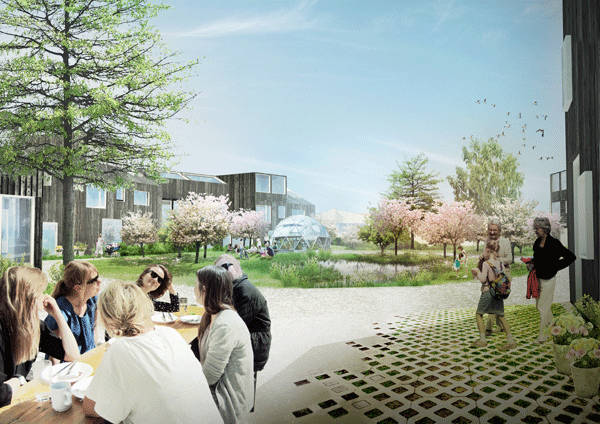
Is this misleading. Image: Delta District Water Management by SLA
Recommended Reading:
- Drawing and Designing with Confidence: A Step-by-Step Guide by Mike W. Lin
- Landscape Perspective Drawing by Nicholas T. Dines
Article by Velislava Valcheva
Sketchy Saturday |035
This week’s Sketchy Saturday top 10. This week’s Sketchy Saturday top 10 is as electrifying as ever. However with such a diverse range, one does have to question – “How do we put the various styles up against each other and choose a top 10? It’s not easy, mind you, but let’s start by looking at the name “Sketchy Saturday“, the key word is “Sketchy” and preference will always be given to work with a high sketchlike presence and raw style as opposed to the more refined rendered types. However with such a diversity of style and no control over who enters on what week, keeping a level of consistency in the judging process is a challenge in itself, and sometimes the sketchy entries are swamped by the more refined styles. This week we achieved a good balance between the raw sketches and the more artistic entries. Enjoy this week’s Sketchy Saturday top 10! 10. by Anastasia B. Uli, University of Florida, Urban Designer at Florida Community Design Center, Gainesville, FL

By Anastasia B. Uli
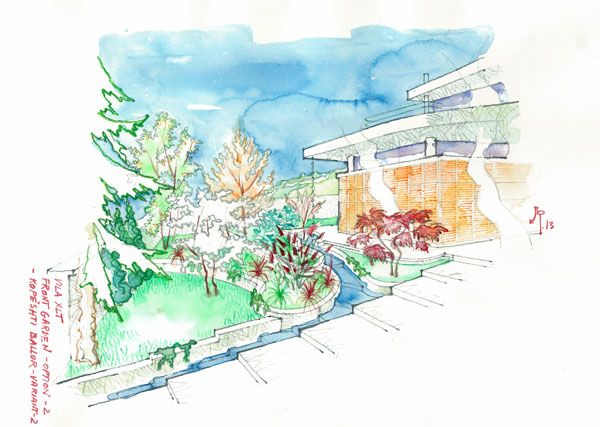
By Andi Papastefani

By Vanessa Marques de Souza.
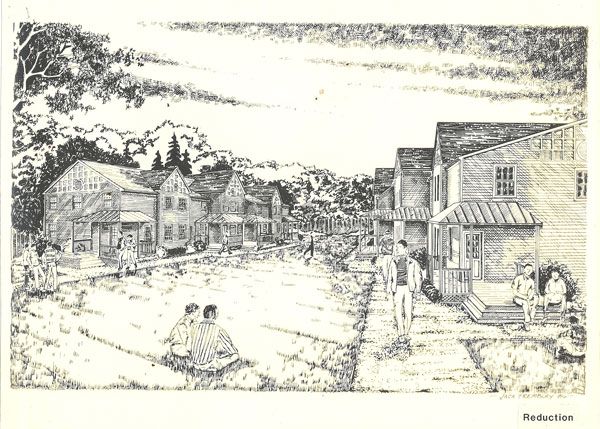
By Jack Tremblay
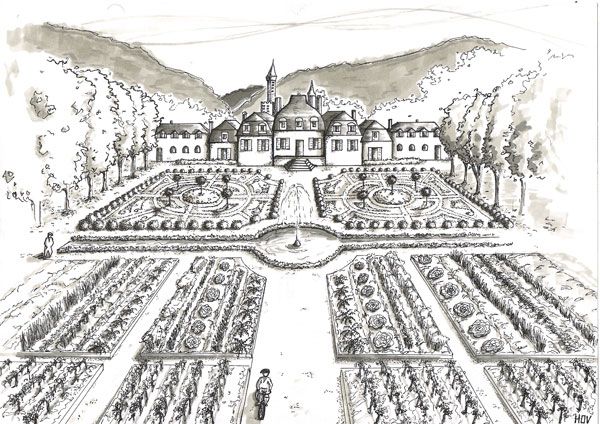
By Camille Briez Chauvey
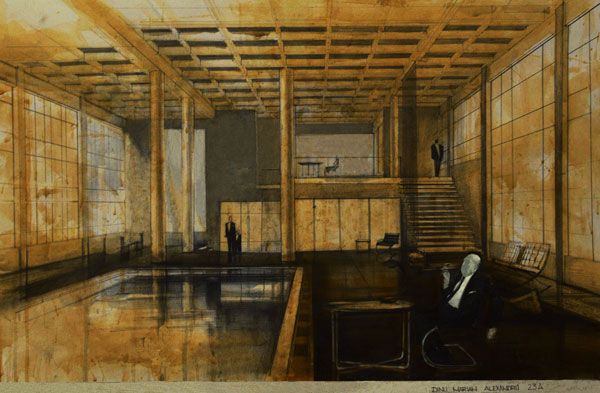
By Dinu Marian Alexandru
- Freehand Drawing & Discovery by James Richards | Book Review
- Digital Drawing for Landscape Architecture, second edition | Book Review
- Top 10 YouTube Tutorials for Technical Drawing

By Peter Bonette
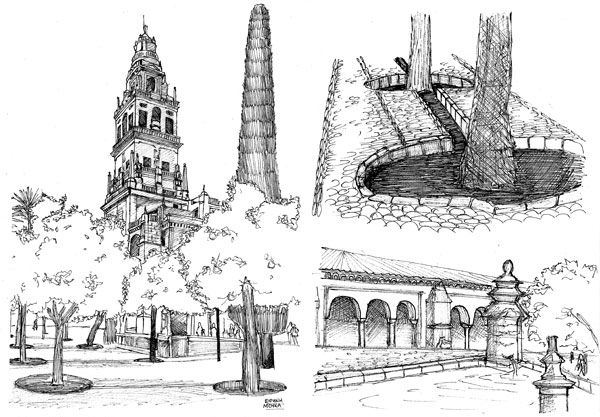
By Eirini Mouka
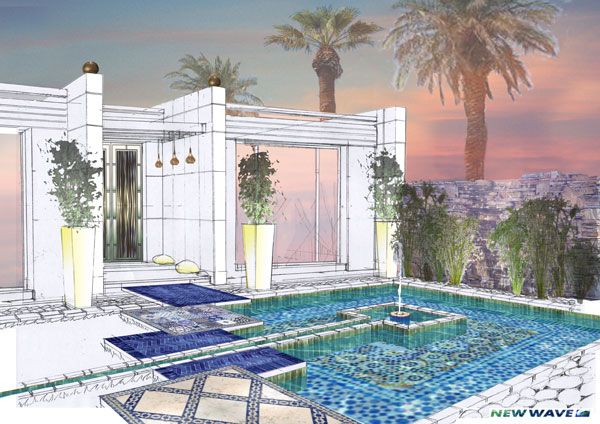
By Karl Bergot

By Pablo Saiz del Rio
- Sketching from the Imagination: An Insight into Creative Drawing by 3DTotal
- Architectural Drawing Course by Mo Zell
Article by Scott D. Renwick Return to Homepage
Sketchy Saturday |032
This week’s Sketchy Saturday top 10. Welcome to this week’s exciting edition of Sketchy Saturday. This week’s sketches may have been the toughest in our Sketchy Saturday history to judge the top 10. There is a fine line between what is excellent work and what is suitable for Sketchy Saturday. With Sketchy Saturday we always stretch the definition of the word sketch and display some questionable entries, but we’re always searching for a high raw element to the work and a direct relevance to landscape architecture. Enjoy this week’s Sketchy Saturday top 10! 10. by Luna Refaie , (Architect) , Jordan
“Our earth is getting covered with buildings , Every small empty space is being built without consideration for the outdoor spaces. We became imprisoned in our houses, We started mentioning the parks, plazas and outdoor spaces as a memory in history. Our planet is crying for missing water features and the green color penetrating our cities and neighborhoods.” Utopia is the name which I would like to give for this sketch. This Utopia is located in The Middle east. – Material used : Watercolours on Fabriano Size A3.” 9. by Sahra Stolz, Master of Architecture, University of Melbourne , Melbourne, Australia “This was sketched in my A5 Moleskine in watercolour and fountain pen from the driver’s seat of my car on a warm afternoon. Minnie St, Brunswick is in the state of Victoria (Australia) where corner stores are known as milk bars. Not long after I made this sketch, this, the last milk bar in the neighbourhood, closed its doors forever, victim to to the hegemony of the chain supermarket.” 8. by Ronak Roshan Gilvaei, Architect B.A., Rasht, Iran “This video is included as part of my teaching of sketching with marker at Art & Culture’s House in Rasht , Iran. This style helps you to have a better presentation and show the wooden material. This style is called Marker and I have also used pen and color pencil in it.” 7. by Devin S. Kimmel, ASLA, Assoc. AIA, Principal at Kimmel Studio, llc “This sketch is of a proposed entry view to a new house and garden we are designing. The house is to be shingle style with a 3 car garage, greenhouse, pool house and pier house. The gardens will have formal and informal spaces, a swimming pool, vegetable garden, orchard, wetland re-vegetation, and general garden spaces. This view angle was chosen to show the relationship of the house, garage, and greenhouse to the fenced entry court garden. The drawing is ink on vellum.” 6. by Elina Richert, 3rd year student, Nürtingen, Germany “The reason and motivation was a nice trip to verbania in Italy with my landscape architecture class. We were in the great park by the villa toronto and I decide to draw the landscape around me. This is a landscape painting and I paint it with a lead pencil ( 2B , HB, 4B)”. 5. by Morozova Lada, landscape architect from Moscow, Russia. “Usually I make small colorful pencil drawings to explain my ideas to the customers. It’s more obvious and you can explain how this place will be looking like.” 4. by Jacek Gonera, landscape architecture student at Wroclaw University of Environmental and Life Sciences (Poland) “The reason for making this work is that I’ve been asked to make drawings with colour inspired by photos from holidays in Greece. I’ve spent quite long time doing this but it brought me so much joy and let me get some more experience with using watercolour technique. Painting is made in colour. It is based on the photo I received. It is my own interpretation (impression) of what I’ve seen. Location of presented painting is Greece. Technique is aquarelle (watercolour) and black ink fine liner. Paper size is A4.” Related Articles:- Freehand Drawing & Discovery by James Richards | Book Review
- How to Suck at Hand Drawings and Still be a Good Landscape Architect
- Interested But Not Confident? – Know How to be Good at Hand Drawings
3. by Tino Beck, self-employed artist, Germany
“I took photos from a historic but badly damaged building – formerly a well known resting place within a lovely forest. On my inkjet I printed them in sepia and by adding a white-to-transparent shading. To introduce the intended reorganizations of the architect I completed the white half directly on the print (grained paper A3 landscape) by including the architects ideas as tender colored hand-painting, using available alignments.” 2. by Jerome K Benhur, 5th year student, Architecture, MEASI Academy of Architecture, Chennai, Tamil-Nadu, India “The Sketch is of Anna University Admin building (Chennai,Tamil-Nadu, India), a campus of 220 years of history. I have seen the campus lots of times before, but this time, I felt the campus grand. I understood what a properly designed landscape could do to a campus. I wanted to record my feeling in the form a sketch. This sketch is done using black pen ( stabilo point88 0.4 ).” 1. by Gustavo Garrido, Landscape Architect “This sketch done to illustrate a landscape project for a small park . Free hand sketch style. Located in the City of Santana de Parnaíba, close to São Paulo, Brazil. I used pen and color markers over sketch paper.” – That’s this week’s Sketchy Saturday Top 10, congratulations to all of you who featured, you have come out on top of a very talented bunch of people. Check out the Sketchy Saturday official Facebook album and see literally 1,000′s of incredible sketches! Follow all the winning entries on our dedicated Sketchy Saturday Pinterest page. If you want to take part send your entries into us at office@landarchs.com Recommended reading:- Sketching from the Imagination: An Insight into Creative Drawing by 3DTotal
- Architectural Drawing Course by Mo Zell
Article written by Scott D. Renwick Return to Homepage
Interested But Not Confident? – Know How to be Good at Hand Drawings
A-Z guideline to a successful hand drawn design. Design is a process that starts right inside the designer’s mind and the soul. Then it comes out in different physical forms by the help of different media. Though the use of software in the design process is getting popular, still we all know and believe that hand drawn pieces in the initial design state is like nothing else. When it comes to translate the creative person’s mind and soul, what can be greater than the hands doing a sketch on paper? The initial sketches are always the pure documentations of the designer’s idea. Also detailed sketches are of added value in the final presentation as well. To be successful in hand drawings some easy and nice primary techniques can be followed.

Maybe one day you’ll be sketching like Juliana Lalaj; one of the entrants to our Sketchy Saturday feature.
Getting Started with Hand Drawings
So, here is a sequential guideline to help if you are interested but not confident yet. At the beginning, the absolute tip, “Believe that all of us are eligible to draw; some of us are just not admitting it yet.” Get started! • Make relationship with lines Drawings are nothing but the arrangement of different lines. Lines are the most essential drawing elements. Forms and shapes can be defined by lines even the space and depth can be sensed if perfectly used. So practicing and gaining control over straight lines, Curve lines etc are very beneficial. Tips: 1. Using the edge of the paper as the reference helps in mastering straight lines. 2. Move your hand, not only your wrist. • Practice drawing shapes The three basic shapes; square, circle and triangle, must be practiced well to be good at hand drawings. As they will make way to draw any other shapes easily. Think of drawing a circular pool, a rectangular park bench or a pyramidal object. Tip:
- Pay attention to the angle between lines in square and triangle, maintain the distance from the center in the circle.
WATCH: How to Draw Circles, Squares, and Triangles
- Practice some basic drawings
There are some basic elements of landscape design which can be repeatedly used in almost every drawing once learnt. Trees The tree is the most valuable drawing element to render a landscape design. Use of different kinds of trees in a drawing easily makes it attractive. Tips:
- Try different shapes and forms of trees. Use the skill of drawing basic shapes and initially keep it simple.
- Use different species of reinforce the context and function you are covering. Coconut trees for a coastal area or high coverage canopy tree for community gathering space will do the trick.
- Tree without leaves is great for indicating weather condition like winter or if the background is to be drawn.
WATCH: Linescapes: How to draw a tree Human figure People add scale and sense of activity to the drawing. Tips:
- Don’t bother about detailing the human figure
- Pay attention to the postures and use figures of different sex, age and height.
- Use human figure to express the context, country, season and even time.
• Other Elements Some others elements like cars, boats, cycles, light posts etc can be easily practiced to use where ever needed. Tips: Know that details are not important. WATCH: How to sketch & draw people Part 1 | How to use a mannequin Also WATCH: Gesture drawing Give “life” to your drawings • Shade, shadow and reflection While shade gives idea about the surface and the shape of a object, the shadow will represent the angle of light and the angle of view. Reflection is the shadow of object on fluid or other reflective surface. Tips:
- Keep all the shadow lines parallel to one-another
- Know that the length of reflection depends upon the angle of the object with the surface
Related Articles:
- Freehand Drawing & Discovery by James Richards | Book Review
- Drawing for Landscape Architecture by Edward Hutchison l Book Review
- 10 Most Interesting Free Android Drawing Apps
WATCH: Shapes into Forms • Proportion This is your best friend and your best enemy as well. If proportion is maintained, lack of drawing skill will be covered up. On the other hand, a disproportionate drawing is a total disappointment and gives the wrong information. Tip:
- Always take an element in the total drawing as reference and draw the rest in proportion to that. The best reference ever is a human figure.
WATCH: Perspective Drawing in Proportion Tip • Idea of perspective Perspective gives life to a 3D drawing. The idea of perspective views is very important to create the sense of space and distance. Three kinds of perspective can be drawn; one point, two point and three point perspectives. Tip:
- To obtain the skill of drawing perspectives from graphical study can be critical. But it can be easily learnt from regular sketching from real life views. Start with the simplest one point perspective.
WATCH: Linescapes: How to draw one point perspective Also WATCH: How To Draw In Perspective: Road, Railway, Train, City Know what you are doing • Focal point You don’t need to draw all of it. Detail the object(s) you want and leave the rest as light as possible. • Simplifying a complex view While drawing spaces from imagination or real life, complications are expected to be avoided. If a real scene contains plenty of elements in complex positions, make it simple. Tip:
- Use thick charcoal, pencil or wide nib marker to naturally avoid unnecessary details.
• Back ground- foreground To emphasize the main object, keep the background less detailed. On the other hand if the back ground is what you are drawing, keep the foreground lighter. One last step remaining, Amaze others and love your sketches!!! Practice systematically and regularly. Apply your ability to observe the surroundings and sketch whatever, wherever, whenever you can. Soon the awesomeness of hand drawn illustrations will start to add to your design and ideas. Recommended Reading:
- You Can Draw in 30 Days: The Fun, Easy Way to Learn to Draw in One Month or Less by Mark Kistler
- Pencil Drawing: Project book for beginners (WF /Reeves Getting Started) by Michael Butkus
Article by Auditi Bridget Biswas Return to Homepage
Is Drawing Dead?
It’s an exciting time to be a designer or developer, and a growing number of new touch-screen tools to make the work more fun are being released every day. It’s like being a kid in a candy store! Given the rapid pace of technological change, individuals with careers deeply immersed in the visualization of design concepts increasingly have the freedom and necessary tools to explore all the new possibilities that tablets, software, and apps have to offer. Which is why we’re asking the question “Is Drawing Dead?” what will become of the hand skills that have formed the basis of our profession, with everything and everybody geared to towards fast and accurate results. Digital Graphics Pros: 1) Accuracy Needless to say, software programs can translate practical measurements to high visual accuracy without having to fuss with the time-consuming act of measuring with a ruler! 2) New Technology-New Possibilities These days, new software such as AutoCAD WS enables you to view, edit, and share AutoCAD drawings with anyone, anywhere using your mobile device. Tablets are also becoming increasingly popular. For example, Wacom’s drawing tablets try to mimic the experience of drawing on paper. Some students say this kind of mimicry allows their ideas and drawings to be more “visionable”.
3) Forget Paper! No more fumbling with awkward paper plans and laptops; the onslaught of so many planning and drawing apps and tools expedites the process of creating perfect structures. Cons: 1) New Technology is Seductive We can easily become bedazzled by what a program can do and forget to insert our own individuality. This is a trap for producing robotic, similar designs. 2) Lack of Spontaneity Every program requires us to learn the technical “how-to” processes before being able to execute our ideas visually. This can be a time-consuming and frustrating process. So, where does hand graphics fit in this process? The ability to express yourself as a designer using a pen on paper is an essential emotion of thought — from your brain to the paper. The key word that I’m hanging on is process; that hand drawing is an essential expression of the design process. Hand Graphics: Pros: 1) Control As you use your hand, you gain great control over your own movements, which in turn benefits your vision. Creativity becomes a process that is not inhibited by the boundaries of software programmers but by your own self-expression. 2) Preserving the Human Touch A great drawing has many layers that go beyond technical skill and captures the unique touch of the designer. That in itself is special and should not be lost as we advance toward a more technological age.
Hand drawing by Amaury Neto as featured in Sketchy Saturday
6 Reasons to Attend LABash 2017
LABash 2017 is already just around the corner, with less than 2 months left! If you needed any convincing and haven’t gotten your registration yet, keep on reading!
1. You will learn things outside of your regular curriculum.
Get messy in a soils workshop, learn about how travel can change your career, explore how the largest estuary in the nation affects the work of a landscape architect, and learn how employers view millennials in the workplace. This is just a sampling of the topics that will be covered at LABash 2017. Even better, you get to build your own schedule! Attend only the sessions that sound interesting to you – you’ll have a lot to choose from!
 Session from LABash 2015 at San Luis Obispo.
Session from LABash 2015 at San Luis Obispo.
2. You will discover a new place.
College Park is within the DC Metropolitan area. Throughout the 3 days, you’ll be just a Metro/Uber ride away from some of the most monumental sights in the nation. See where MLK’s “I Have a Dream” speech took place, be steps from the President’s front lawn, take a stroll along the National Mall, and explore world renowned museums at your leisure (and mostly for free!). Our Closing Ceremony is just a short walk from the Washington Monument and the White House. Keep an eye out for our Tour openings – they’ll put you in the heart of DC during sketch crawls, riverfront explorations, and art tours – and all just in time to see the world-famous Cherry Blossoms bloom!
 Sketch of the Capitol by James Richards. Join his DC Sketch Crawl at LABash 2017!
Sketch of the Capitol by James Richards. Join his DC Sketch Crawl at LABash 2017!
3. You will make memories and long-lasting relationships with people from all over the continent.
This is your chance to meet the most enthusiastic members of our generation of future landscape architects, urban planners, plant scientists, or architects! You’ll dine together, learn together, explore together, and maybe even take goofy photos together at the Land8 Happy Hour (like this one).
4. You can earn LA CES credit.
That’s right, licensed people. This conference doesn’t just benefit students. We are aiming to offer at least 4 credited sessions for you. Just follow us on Instagram to stay tuned for our announcement when we reach this goal!
5. You will make valuable professional connections.
Attending LABash can give you the edge you need in jump-starting your career. You’ll get to know dozens of professionals in the field who can help you with internship/job opportunities, give you valuable career advice, and be a contact for the future. Don’t forget to bring your resume and portfolio! Our career/informational expo will be open throughout the 3 days, opening dozens of valuable connections for you.
 Expo at LABash 2015.
Expo at LABash 2015.
6. The Land8 Happy Hour!
The Land8 Happy Hour: LABash-Style sponsored by ANOVA is returning again this year! On Friday night, you’ll enjoy a night of dancing, an open bar, and fun at a local favorite, Terrapin’s Turf.

Follow LABash 2017:
Is Drawing a Natural Talent?
We take a look at the question “Is Drawing a Natural Talent?” and help to understand what lies beyond the artist and their abilities. When it comes to drawing as a form of art, there are many facts and suggestions dealing with the power of this form of communication and also many books and tutorials, where every day we can see examples of excellent drawings and drawing techniques. Whether they are done with pencils, pen, ink, fiber-tip pens, chalk, charcoal, crayons, pastels, digital drawing or a combination of all these techniques, we look at them with much enthusiasm and admiration. Some of the drawings look so real that we can not even tell whether they are pictures or drawings. For those who are not sure how to overcome the overwhelming choices between all these drawing techniques and wonder whether can drawing be learned, we asked one question: Is drawing a natural talent? Are we are somehow predisposed to be great artists or architects from early childhood or must we work on ourselves to improve our drawing skills?
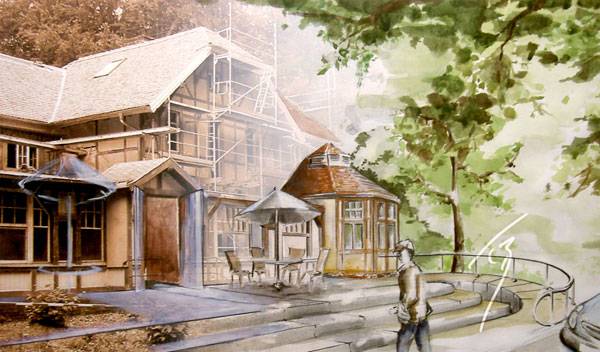
The image featured in Sketchy Saturday. By Tino Beck, self-employed artist, Germany.
Every Artist Was First an Amateur
If we look back at the best artists of all time, we will find something in common; they were all people who learned drawing and practiced and practiced every day. From Leonardo da Vinci to Picasso and others, they all loved to draw
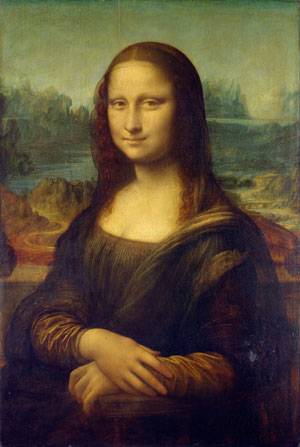
“Mona Lisa, by Leonardo da Vinci, from C2RMF retouched” by C2RMF: Galerie de tableaux en très haute définition: image page – Cropped and relevelled from File: Mona Lisa, by Leonardo da Vinci, from C2RMF.jpg. Originally C2RMF: Galerie de tableaux en très haute définition: image page. Licensed under Public Domain via Commons
Learning How to Draw
Everyone can draw, it’s true, but the question is; what really is the boundary between a “beautiful” drawing and a masterpiece? Can one masterpiece be explained and set with some standard of drawing? Many people think that the great artists were all born with supernatural talent. Yes, in relation to others, they maybe had some skills, like an eye for details, an innate sense of composition, an attenuated perception of objects being drawn, the ability to make good representational decisions, and the deft motor skills required for mark-making, but even they had to advance their talent with much practice and accumulation of knowledge. WATCH: Start Drawing: PART 1 – Outlines, Edges, Shading
Keep Calm And Draw
Every beginning is hard, but it should not be a problem if you really want to learn how to draw. When you know how much time you need for drawing, the main reason that inspires you, your own sources of creativity, and how to develop your intuitive impulses for drawing, you can start creating your own unique drawings.
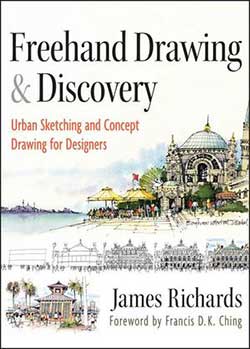
Freehand Drawing & Discovery by James Richards, click here and get the book
” Talent is good, practice is better, passion is best “
At what point you can call yourself an artist? When you make your drawings simple. When you make them with love. When you make them with passion. You don’t need to be the best of the best to produce great drawings. Over time, the results of practice will start to show and you will be able to enjoy your drawings. In his excellent book “Drawing the Landscape“, Chip Sullivan says: “I love to draw! I love to draw almost more than anything else in the world. It brings me solace, excitement, and the thrill of experimentation. When I am feeling low, drawing can make me happy. With a single piece of paper and a mark-making tool, I can create whole new worlds. Drawing allows you to design environments capable of
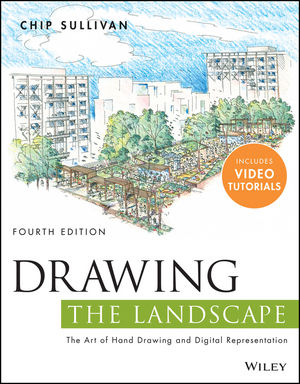
Front cover of Drawing the Landscape
Chip Sullivan.
Recommended Reading:
- Drawing and Designing with Confidence: A Step-by-Step Guide by Mike W. Lin
- Landscape Perspective Drawing by Nicholas T. Dines
Article by Amela Djurakovac Return to Homepage Featured image from Sketchy Saturday. By Tino Beck, self-employed artist, Germany.
Sketchy Saturday |034
This week’s Sketchy Saturday top 10. Here we go with 10 enthusiastic, talented Sketch-Stars that have submitted their handy work to the office for this week’s Sketchy Saturday. In this week’s top 10 we see a range of styles, and levels of creativity which show that risk-taking is involved in getting your message across. Each sketch is as unique as a fingerprint and is almost like the artist’s signature. This is work that not only embodies their skills and creativity, but their experience, passion and thought process. To appreciate a creative piece of work is to open a doorway to understanding the person who created it. A gift that inspires us and connects us to one another. Enjoy this week’s Sketchy Saturday top 10! 10. by Anastasia B. Uli, Master of Sustainable Design UF student, Gainesville FL

Anastasia Uli

Mustafa Hadla

Tarsis Aires
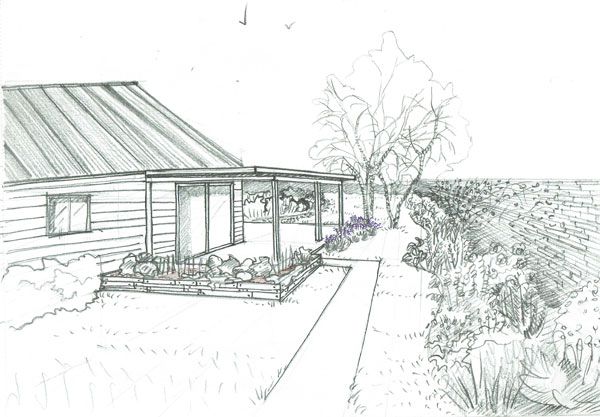
Oana Chiriac

Isa Eren AKBIYIK

Ginara Cristina

Peter Bonette
- Freehand Drawing & Discovery by James Richards
- Drawing for Landscape Architecture by Edward Hutchison
- Digital Drawing for Landscape Architecture, second edition
3. by Marika Cieciura, landscape architecture student at Manchester Metropolitan University, UK, on the exchange program at South Dakota State University

Marika Cieciura

Maria Chughtai

Jack Tremblay
- Sketching from the Imagination: An Insight into Creative Drawing by 3DTotal
- Architectural Drawing Course by Mo Zell
Article by Scott D. Renwick Return to Homepage
Chunling Wu’s Recommended Landscape Architecture Drawing Tools and Essentials
As a follow up to commonly asked questions about the drawing equipment I use in my landscape sketches, I’ve rounded up a list of some of my commonly used tools. These days, many art supplies are quite expensive. Luckily, however, I don’t use many expensive tools. For beginners, I strongly suggest starting with simple tools because they are easy to use and more affordable. In addition, starting out with the bare bone tools makes it easier to see how line quality can then be improved with higher quality equipment.
RELATED STORY: Interview with Urban Sketcher Chunling Wu
I usually use color pencils/watercolor color pencils for design rendering and watercolor for urban sketching. I encourage you to try different media and mixed media because doing so can help you find your personal preferences and unique style.
I use Platinum carbon ink (bottle ink black 60cc) imported from Japan. I prefer waterproof ink such as this one because I like to add watercolor after using the ink to create a black outline. As a high quality product, this carbon ink is consistently black and never clogs up. Impermanent ink such as this is also good for times when you want to add ink at the end of the drawing process. For instance, I sometimes to choose to spread the ink out overtop a sketchy watercolor drawing to create shading or other special effects.
In most sketches, I use the Hero 1077 bent nib fountain pen (1077 also has straight nib model). This is a great pen with a good price (less than 10 dollars); you may want to change the converter, though. A bent nib allows me produce rich dynamic lines and allows me to create different textures and special effects by holding the pen in different angles and controlling the pressure. The other pen I often use is the Namiki fountain pen. Its nib was modified a little bit for more flexibility; however, it may not be the best choice for people who like to press down hard on pens. If you have that tendency, the Lamy Safari fountain pen is a better consideration.
I use the Uni Pin Pigment waterproof pens for design and urban sketching (0.3 and 0.5). I like to use these pens to create a clean and crisp style. Other brands listed include: the Faber-Castell Pitt artist pen (B), a brush-like pen that can be used to color large black areas such as people’s hair, clothes or windows; the Staedtler Permanent Lumocolor (F) and Sharpie permanent Marker (Ultrafine point), which are also good choices for most sketches since they produce nice spread-out effects on certain kinds of sketch paper; and General Black gel pens or ball pens, which I use a lot for drawing. In the first year of master’s study, I bought a box of gel pens for most of my communications assignments.
RELATED ALBUM: Chunling Wu’s MLA Portfolio
INK PEN CLEANING
KOH-I-NOOR Rapido-Eze Clearning Solution. This is a great product for cleaning your fountain pen in case you bought wrong ink that’s clogged your pen.
WATERCOLOR BRUSHES
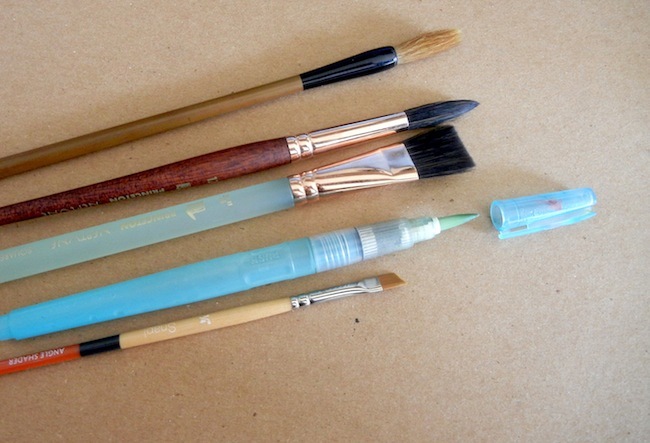 For most of my sketches, I use the Yasutomo Niji Water Brush. The reason I like this brand is because the brush material is more elastic and not too soft. I’ll use Chinese brushes made from weasel’s hair for the background wash. Personally, I prefer round animal hair brushes because animal hair can absorb water easily. Synthetic hair is also a good choice for students who cannot afford expensive animal hair brushes. I recently bought large round and flat brushes (synthetic versions of squirrel, 10 and 12 size) from Princeton Neptune. I also use Nylon brushes, however, I wouldn’t recommend flat watercolor Nylon brushes for beginners. To properly choose the types of brushes that best fit your drawing style however, you need to try them yourself. The type of brush you’ll use also depends on how you color your drawings.
For most of my sketches, I use the Yasutomo Niji Water Brush. The reason I like this brand is because the brush material is more elastic and not too soft. I’ll use Chinese brushes made from weasel’s hair for the background wash. Personally, I prefer round animal hair brushes because animal hair can absorb water easily. Synthetic hair is also a good choice for students who cannot afford expensive animal hair brushes. I recently bought large round and flat brushes (synthetic versions of squirrel, 10 and 12 size) from Princeton Neptune. I also use Nylon brushes, however, I wouldn’t recommend flat watercolor Nylon brushes for beginners. To properly choose the types of brushes that best fit your drawing style however, you need to try them yourself. The type of brush you’ll use also depends on how you color your drawings.
WATERCOLOR
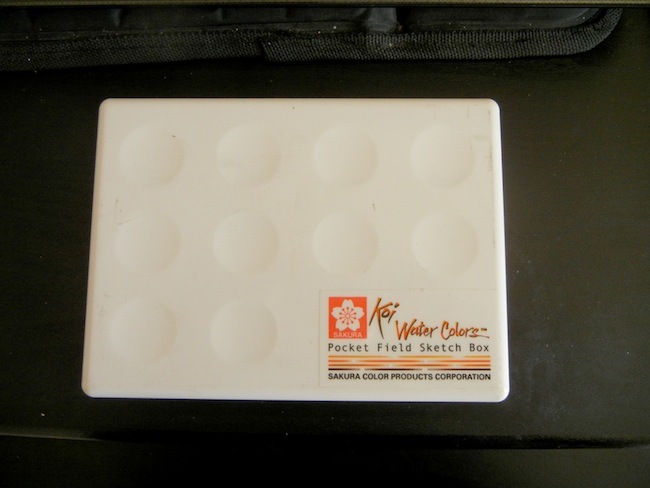
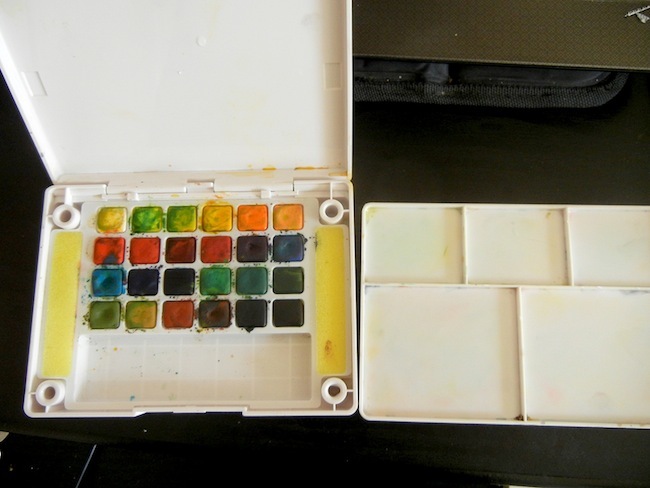
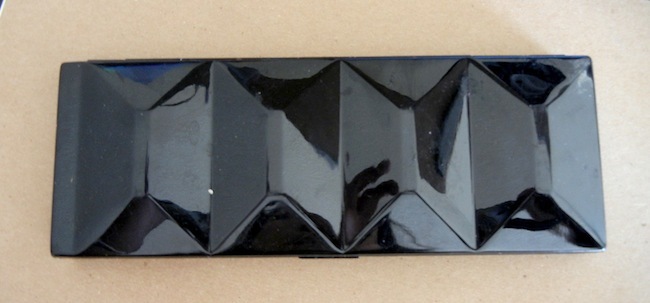
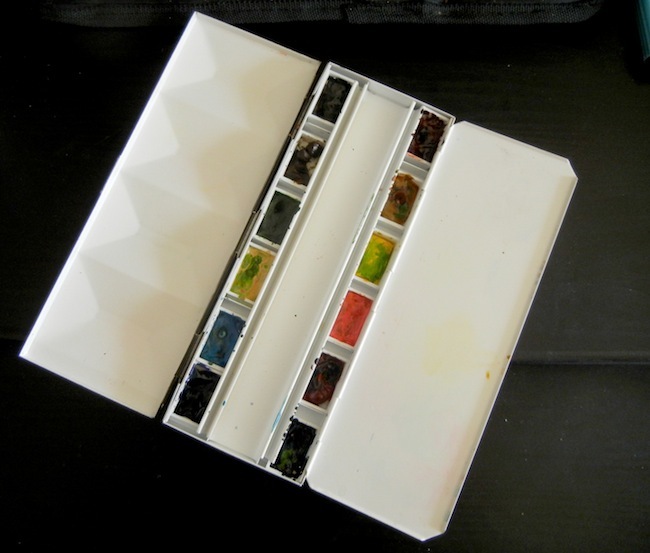 sI have two sets of watercolors. The first is the Koi Water Color Pocket Field Sketch Box. Generally these colors are enough for sketching and a really great choice for beginners. My favorite watercolor sets, however, are Daniel Smith. I also have different empty pans that I can fill from watercolor tubes so I can create a palette of my favorite colors. The color palette I’ve shown above is from James Richards’ book Freehand Drawing & Discovery P146: Raw Sienna, Burnt Sienna, Cadmium Red, Alizarin Crimson, Cadmium Yellow, Prussian Blue, French Ultramarine, Cerulean Blue, Hooker’s Green, Raw Umber and Payne’s Gray. Naples Yellow is a great one for buildings and stonework; Richards has since added that color to this list.
sI have two sets of watercolors. The first is the Koi Water Color Pocket Field Sketch Box. Generally these colors are enough for sketching and a really great choice for beginners. My favorite watercolor sets, however, are Daniel Smith. I also have different empty pans that I can fill from watercolor tubes so I can create a palette of my favorite colors. The color palette I’ve shown above is from James Richards’ book Freehand Drawing & Discovery P146: Raw Sienna, Burnt Sienna, Cadmium Red, Alizarin Crimson, Cadmium Yellow, Prussian Blue, French Ultramarine, Cerulean Blue, Hooker’s Green, Raw Umber and Payne’s Gray. Naples Yellow is a great one for buildings and stonework; Richards has since added that color to this list.
COLORED PENCILS
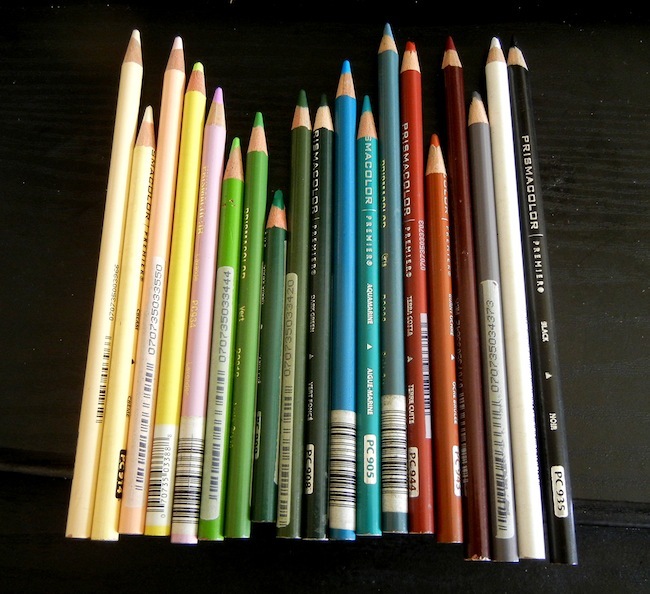 I primarily use Prismacolor Colored Pencils. I’ll usually mix them with my other watercolor pencils (below). The color palette above is from James Richards’ book Freehand Drawing & Discovery P29: Light Peach, Cream, Lavender, Aquamarine, True Blue, White, Grass Green, Dark Green, Yellow Ochre, Apple Green, Spring Green, Oliver Green, Warm Gray 70%, Burnt Ochre, Terre Cotta, Carmine Red and Black.
I primarily use Prismacolor Colored Pencils. I’ll usually mix them with my other watercolor pencils (below). The color palette above is from James Richards’ book Freehand Drawing & Discovery P29: Light Peach, Cream, Lavender, Aquamarine, True Blue, White, Grass Green, Dark Green, Yellow Ochre, Apple Green, Spring Green, Oliver Green, Warm Gray 70%, Burnt Ochre, Terre Cotta, Carmine Red and Black.
WATERCOLOR PENCILS
 Just like with my watercolor palettes, I use two different brands of watercolor pencils. After experimenting with different brands, I’ve decided that Swiss-made Caran D’ache is my favorite. I like to use them as regular color pencils in design renderings. Their wax content is low enough that I can overlap the colors. They give a nice watercolor-like tone and create nice strokes.
Just like with my watercolor palettes, I use two different brands of watercolor pencils. After experimenting with different brands, I’ve decided that Swiss-made Caran D’ache is my favorite. I like to use them as regular color pencils in design renderings. Their wax content is low enough that I can overlap the colors. They give a nice watercolor-like tone and create nice strokes.
SKETCHBOOK AND PAPER
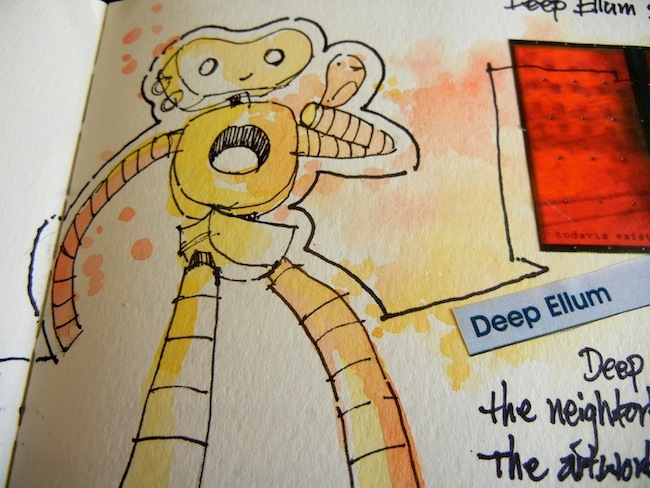 I usually use the Moleskine Art Plus Watercolor Album, A4, Black, Hard Cover (12 x 8.5) (Professional Folio Series). This sketchbook allows me to do a little bit of a watercolor wash and provides enough room for a customized design.
I usually use the Moleskine Art Plus Watercolor Album, A4, Black, Hard Cover (12 x 8.5) (Professional Folio Series). This sketchbook allows me to do a little bit of a watercolor wash and provides enough room for a customized design.
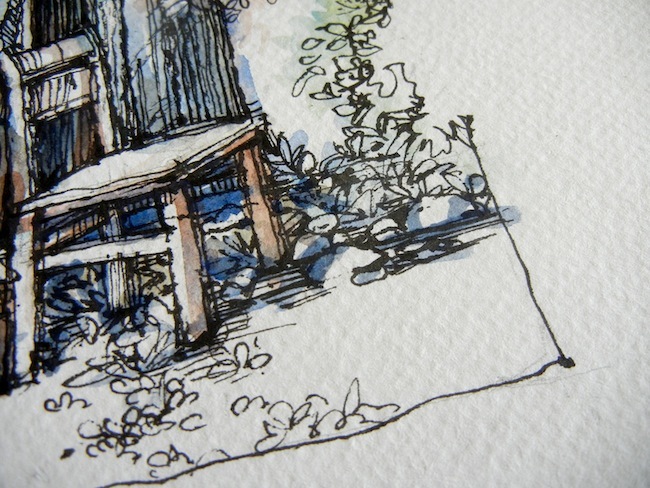
 I don’t have a preference on a brand of watercolor paper. I usually choose watercolor paper based on its thickness and paper texture. Currently, I’m using Strathmore Windpower Watercolor cold press and acid free watercolor paper. It’s 9”X12” with 140lb. This type of paper has a light texture and it’s pretty smooth for pen and watercolor. For a rougher version, you can try the Bee Paper Aquabee, 11”X15” with 140lb. Although it is not easy to show details on “bumpy” paper, drawing on rougher paper creates a great loose feeling to your art.
I don’t have a preference on a brand of watercolor paper. I usually choose watercolor paper based on its thickness and paper texture. Currently, I’m using Strathmore Windpower Watercolor cold press and acid free watercolor paper. It’s 9”X12” with 140lb. This type of paper has a light texture and it’s pretty smooth for pen and watercolor. For a rougher version, you can try the Bee Paper Aquabee, 11”X15” with 140lb. Although it is not easy to show details on “bumpy” paper, drawing on rougher paper creates a great loose feeling to your art.
7 Things You Should Never do as a Landscape Architecture Student!
Landscape architecture is a multidisciplinary field of study where if you are not provided with some basic guidelines, you might find yourself confused and frustrated. Working long hours on a computer can be fruitful, but you can sometimes get bogged down. Here are some tips to make life as a landscape architecture student a little bit easier! 1. Don’t forget this button combination: Ctrl + S Make it a ritual to save your work when finishing an element from a drawing, or hit Ctrl + S at set intervals, such as every 10 minutes. This habit will pay off many times over. A great life hack is to put a sticky note on the side of your computer with the reminder “Don’t forget Ctrl + S”. 2. Don’t depend only on the Internet for inspiration and references.
There are great landscape architecture books that will open your eyes to things you didn’t even know exist. For example, designing a meadow – enough with the predictable, luscious green carpet in each garden; try something new. Books also offer another level of credibility for what you are learning, allowing you to cross-reference among different resources. Besides, it is great fun to go to the nearest library and choose from the dozens of books related to the field. See all our recommend book reviews! 3. Don’t forget to print your designs as a draft It is very convenient to work on a computer that has dozens of programs, but when it comes to corrections the best way is the old fashioned drawing on the paper. Print out your computer aided work on A4 or A3 sheets in black and white to check them. It can give you a better view of the entire project. 4. Don’t forget to get your hands dirty! Stay closer to nature: Observe it, explore it. Create your first designs in your own garden. Be a hands-on designer, not a designer who can only relate to computer programs.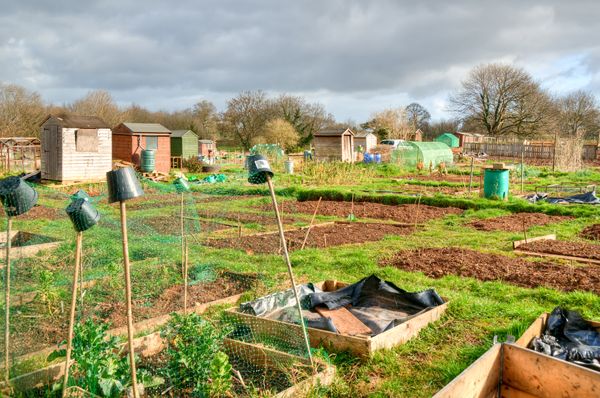
Working at your local allotment, may teach you more about the local community than analyzing statistics on the computer; credit: shutterstock.com
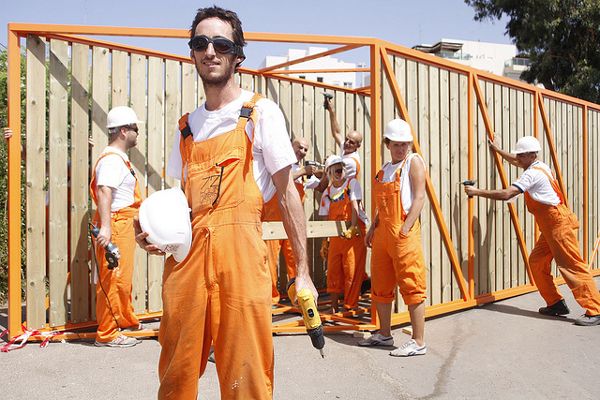
72 Hours Urban Action is an international rapid architecture event, check it out HERE! and get involved credit: Mor Arkadir
Land8 Member Spotlight: Interview with Urban Sketcher Chunling Wu
Chunling Wu stunned and inspired the Land8 community last summer with her “Urban Sketching” hand drawings. A UTA landscape architecture graduate student and active Urban Sketchers member, Chunling avidly practices and hones her beautiful freehand drawing technique. She joined us in an interview to talk about her background, process, and drawing influences.
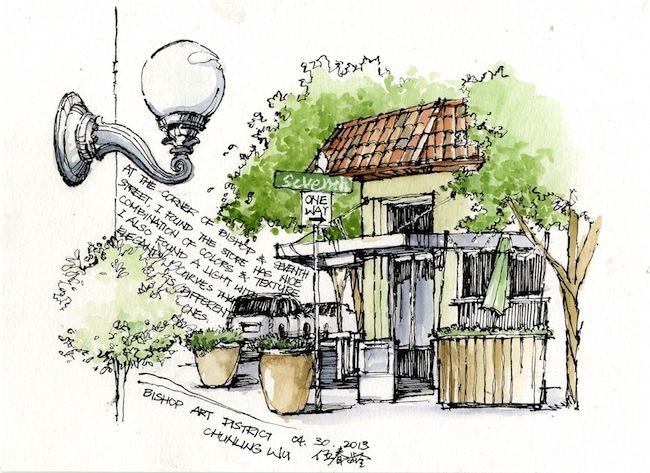 Can you introduce yourself and tell us how you got involved in landscape architecture?
Can you introduce yourself and tell us how you got involved in landscape architecture?
I am a graduate student in the University of Texas at Arlington. I am also an urban designer, sketcher and art amateur.
My way to landscape architecture was complicated. For my undergrad, I majored in environmental art which included courses in architecture, interior design and a little bit graphic design–that was my start to a design career. Back then, I was focused on architecture and didn’t get involved in landscape architecture very much until I found my bible called German Landscape Architecture Design (Translation name, Chinese version published in 2001).
The projects introduced in this book were mostly built around the 90s, but I was attracted by this book and I realized that the many things I learned from architecture and graphic design could also apply to landscape architecture. In 2006, I started my first design job, where I worked on some large-scale projects. Meanwhile, I found another Chinese translated book called Design the American Cities by Richard Marshall. At that moment, I understood that landscape architecture is not just about plaza, garden or park design but also about urban design and planning, and all environments that relate to people. However, I knew I couldn’t find a landscape architecture job just based on passion alone. So after 5 years working in the civil engineering and architecture, I decided to give myself a new beginning and return to school for an opportunity in landscape architecture.
There are many fans of your artwork on Land8. How would you describe your drawing style?
I have had an account with Land8 since 2005 and have learned a lot from other people’s posts. But I never thought my sketching could be inspiring to others as well and appreciate the people’s feedback and warmth on Land8.
I don’t know how to describe my drawing style. I don’t think about style. Actually I believe I developed it from different stages and I am still improving it. I have been influenced by Japanese comics since 12. I learned classical sketching in high school. Later on, I was inspired by one of my best friend in high school who is good at calligraphy. When I was in university, I bought a book called The Art of Architectural Illustration. I was fascinated by some artists’ works in that book. During my first job, I had a friend, a young master in landscape graphic drawing, who gave me a lot of advice. Then I had a four to five year gap when I didn’t draw at all until I started my landscape architecture education in UTA in 2011.
You commented on Land8 before that you didn’t start sketching until you were inspired by “a famous landscape architect and really good mentor.” Can you tell us who that was and how you got started with sketching?
Yes. His name is James Richards. He is an urban designer, a professor in landscape architecture program at UTA, and the author of Freehand Drawing and Discovery: Urban Sketching and Concept Drawing for Designers.
Jim showed us his unique style in sketching in a faculty recruitment presentation. Right after that presentation, I immediately knew that I needed to take his class and become his teaching assistant. So I made an appointment with him, met up and showed him my work. In 2013, I became his TA for a communications class and I absolutely love it. He not only shows the photos and design samples, but he’ll also talk about his experience and stories in the local Urban Sketchers Group, an organization that does on-location drawings. The most important thing I have learned from him is that a designer should have an open-mind in order to appreciate other people’s work and to absorb wide knowledge from other fields. When I got involved more in his studio and urban sketching class, he encouraged me to sketch outside and participate in Sketchcrawl.
Who are some of the most influential landscaped architects and artists influencing your sketching style today?
Thomas C. Wang, Willem van den Hoed, James Richards, Chip Sullivan, Ch’ng Kiah Kiean, Thomas Schaller, and many traditional Chinese paintings.
How have you found sketching helpful in the design process?
Yes absolutely helpful. Some people would think sketching is to copy and replicate the objects, and one day uses them in a design. I would say, sketching is not only recording but also an observation and learning process. Once I need to improve a residential conceptual planning. A walking axis set among residential towers ended up with a sculpture. Image this, people are walking along the axis and get attracted by an interesting sculpture, but they find nowhere to hang out and enjoy the place. So the solution was to add a small plaza in front of sculpture that provided a gathering space and used sculpture as visual focal point at the same time. This is a lesson I learned from my observation in New York City and my hometown Shanghai. So I would say copy maybe tells me what sculpture I can use. But sketching is a process to train my eyes and brain to find problems in the design and seek solutions that are already around us.
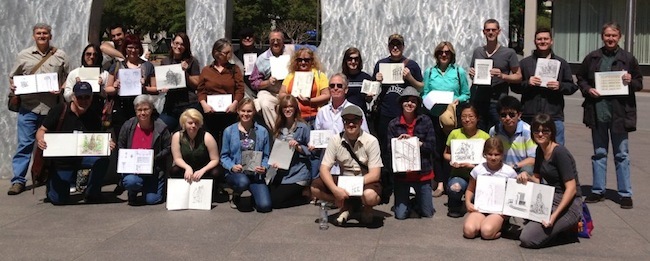 You are part of Urban Sketchers Texas. Can you talk a little about how being part of that organization helps you improve as an artist and as a designer?
You are part of Urban Sketchers Texas. Can you talk a little about how being part of that organization helps you improve as an artist and as a designer?
It has not been a long time since I joined Urban Sketchers Texas. As I mentioned, Jim encouraged me to be involve in this group last year. The most wonderful thing of being part of this group is that it opened my eyes. I saw people’s passion from all over the world and from different occupations. I saw interesting skills and perspectives that are quite different from landscape architecture. I met people who are not shy to post their work, even when they lack drawing experience. The group reinforces positive qualities that artists and designers need to have to be successful: to be open minded, be brave, and be willing to learn from one another.
Any advice for landscape architects who hope to improve their urban sketching skills?
I’m still learning, so I’m not sure if I am able to give helpful advice. But drawing from my experiences I would say:
- It is ok to be frustrated, but it is not ok to give up.
- When you practice your skills, it is not shameful to copy other people’s style.
- Slow down when you feel that using a fast and loose style is not helpful to you.
- It is never too late.
Thank you Chunling for sharing your inspiring sketches, your story, and wisdom with Land8!


